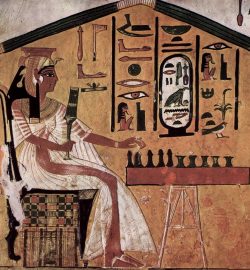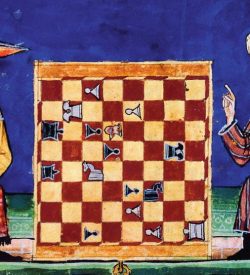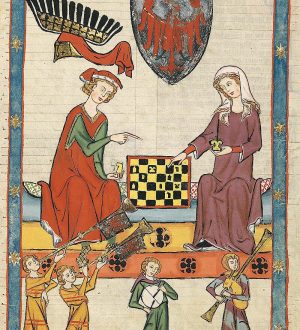The history of the board game is lost in the depths of centuries. Games related to chess were played since ancient times, in the area from Greece and Egypt to China. All the countries located in this area claim the origin of the game. Such a game had also reached the Celts even before the Roman conquest.
The word chess comes from the Italian scacco which comes from Persian.
However, neither its inventor nor the time of its appearance has been determined to this day. Many, more theories, have been developed regarding its original form, which was played in India 15-20 centuries ago, that is, around the Hellenistic period. At that time, this game was called chaturaga, which means quadruple composition, that is, a game with the four weapons of the ancient Indians: elephants, cavalry, chariots and infantry, which was played by four people and not by two, each player occupying one corner of the chessboard. The leader of the army was of course the king.
However, of all the various theories that have been developed, the most prevalent version is that chess ultimately originated in India and specifically its inventor is the Brahmin Sissa, but at an unspecified time. This is mainly based on that great tradition with the doubling of seeds.
Sissa's request
According to this tradition, when once the ruler of the region where the Brahmin Sissa lived invited him to demonstrate the game he had invented, when he finished he was so fascinated by it that he asked Sissa what he would like as a reward. Then the wise man asked for as many grains of wheat as could be included in the 64 squares of the chessboard, putting one grain in the first, two in the second, four in the third, eight in the fourth, etc., thus doubling each time in the next square, until the 64th square.
The ruler, considering the request insignificant, asked him again about something more serious. However, at Sissa's insistence, the ruler ordered a camel load of wheat to be emptied next to him. His surprise, however, was great when his treasurer and head of his warehouses reported that not only the wheat of the hegemony, but also of all the surrounding hegemony, was not enough to satisfy Sissa's request.
Indeed, the total wheat needed amounted to 18.446.744.073.709.551.616 grains, which, expressed in weight, taking into account the weight of a grain equal to 0.053 grams, was equivalent to the enormous quantity of 977.677.436.907 tons!
Chess had already reached its final modern form in Western Europe by the 15th century. Changes to the rules over the past five centuries have generally had to do with the refereeing of the games, rather than the game itself.
Much earlier, in Byzantium, a variation of the game was played, the well-known zatrikion. This game probably came directly from the Persians. In fact, the word zatrikion is etymologically derived from the ancient Persian shatranj which means “royal game” (this is logically interpreted from the special role of the king in the game and not “because it was played by kings”).
Although zatrikion is much older than chess in the rest of Europe, it is not the direct ancestor of modern chess. The direct ancestor of chess came to Western Europe from the Arabs. The Arabs in turn had also taken the game from the Persians.
In the past, the theory that chess in general originated from an Indian game, the chatarunga around 600 AD, but the evidence is now considered weak. Even so, India is a very popular hypothesis for the origin of chess.
It is interesting to note that the movements of the knight, the rook, the king and, to a large extent, the pawns remain unchanged from Arabic chess. The Arabs also constructed chess problems. Some, thanks to the above similarity, retain their functionality unchanged. The main changes that chess underwent are the queen's move, which, due to the all-powerful Queen Isabella of Castile and León, became all-powerful in modern chess, the move of the bishop, the ability of pawns to move two squares on their first move (from the 15th century), as well as castling (from the 14th or 15th century).
The rook originally symbolized chariots, but in some way it seems to have become associated with siege towers.



